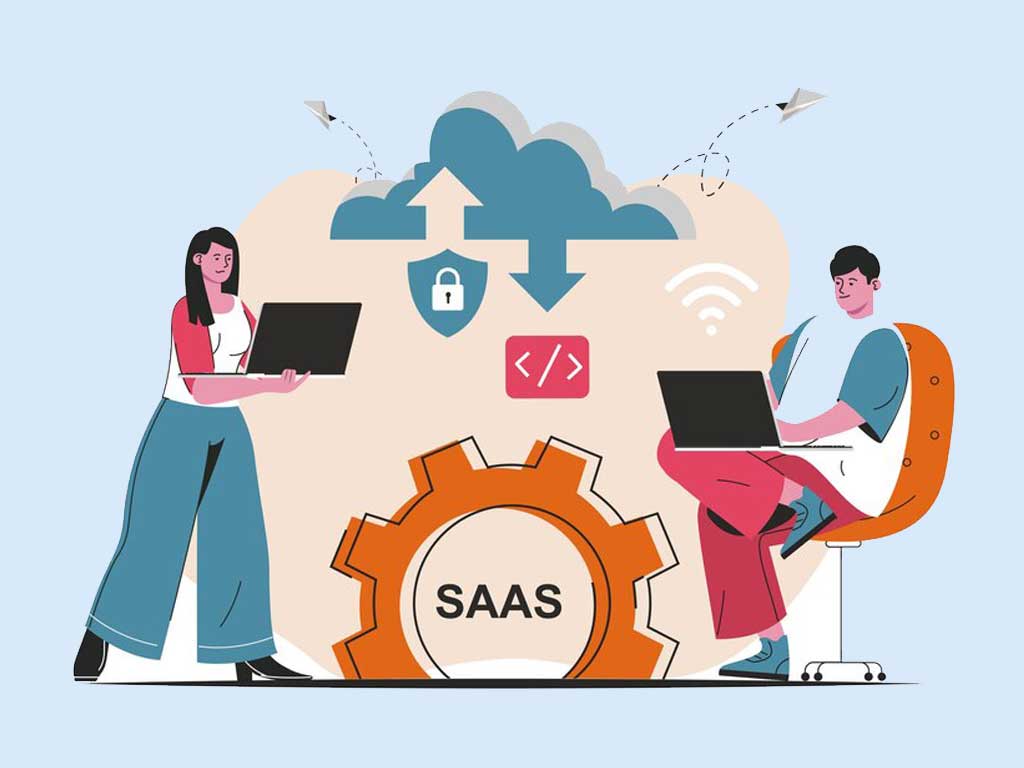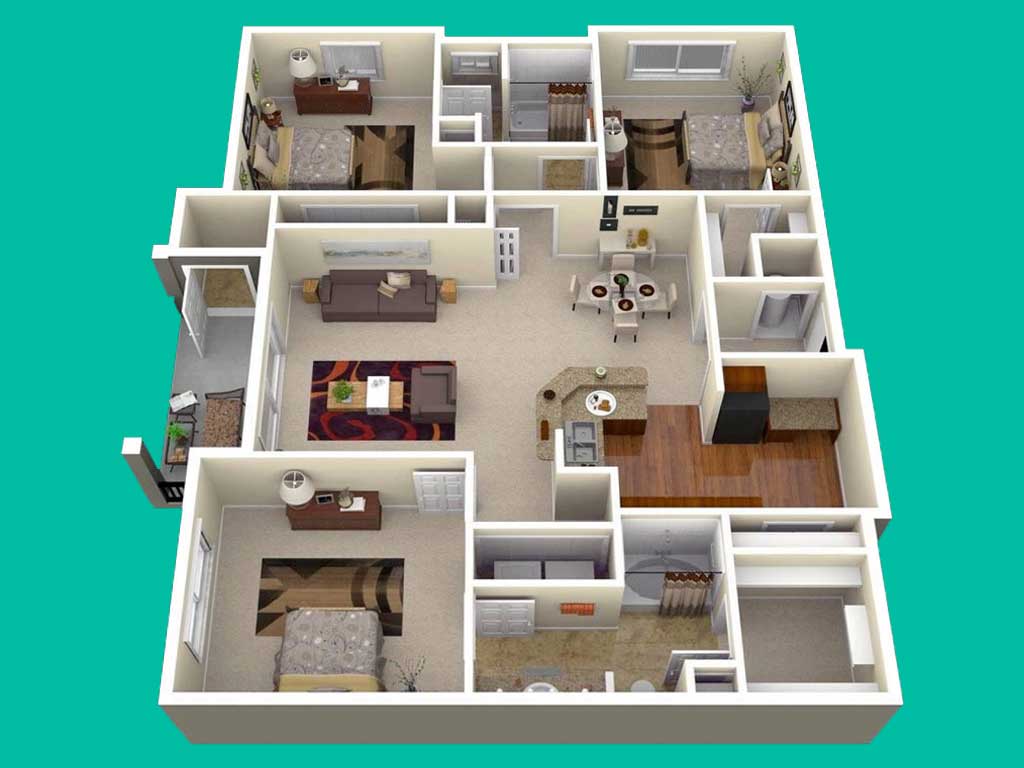What is Software-as-a-Service (SaaS)?

SaaS is a method of delivering software on-demand over the internet instead of installing and running it on your personal computer. In this web-based software delivery model, applications are installed on a group of interconnected high-performance servers known as the cloud.
SaaS applications are accessed using a web browser. So SaaS apps can be accessed from any laptop, tablet, or mobile with an internet connection.
One of the earliest examples of a SaaS app is Email.
What is SaaS Architecture?
SaaS vendors usually follow a multi-tenant architecture. A single configuration of the app is used by all customers or tenants.
In traditional software that is installed on individual machines, different customers can have different versions of the software in different configurations.
The SaaS model allows the software provider to maintain only one version of the software with the same settings being used by all customers.
This makes development, bug-fixing, and upgrades a lot easier.
Each customer’s data is tied to a unique identifier, like a username and password. This prevents data for different users from mixing together and allows the app to show each customer their individual instance of the app.
Major Advantages, Features and Benefits Of SaaS
Lower Costs
SaaS providers usually provide a subscription-based licensing model. You only have to pay a fixed fee every month to keep using the software.
You don’t have to purchase or maintain the infrastructure for the software. This makes SaaS a more efficient and cheaper alternative to traditional software.
Flexible Payments
The subscription-based payment model followed by SaaS allows you to pay only for the features you need. You can buy the lowest-cost plan when you are starting out.
As your business grows and starts needing more features, you can switch to higher-cost plans.
Scalability On Demand
If you had to scale from maintaining 1,000 users’ data to 10,000 users’ data in a traditional software model, the cost and complexity needed for upgrading your software and hardware could be significant.
In the SaaS subscription model, you can simply purchase the additional feature, service, or storage capacity from the vendor.
This means it is much easier for businesses using SaaS apps to scale and grow quickly.
Easier Integration
SaaS applications easily connect and integrate with other systems, platforms, and apps using APIs. This allows multiple apps to be connected together in a customized way without additional costs.
Automated Immediate Updates
Traditional software involves several steps when it comes to updating to the latest version. Support from IT technicians is also needed in some cases.
With SaaS, the vendor can install all updates, bug fixes, and security patches on the cloud, and they will automatically be reflected for all users immediately.
Realtime Data Updates
Data for SaaS apps usually gets updated immediately on the cloud whenever any data source or individual user inputs or changes something.
This allows you to view the latest data in real-time and see analytics based on it.
Reliability
An application installed on your personal machine can get damaged because of hard-drive failure and become inaccessible.
Cloud-based app providers put a lot of effort and investments into maintaining a robust infrastructure with over 99% up-time. This means your data is safe and always accessible.
Quick Feature Upgrades And Deployment
As the SaaS vendor has the data and usage analytics for all users available, it is easier for them to identify new features that will most benefit clients.
New features can be rapidly built into the software and deployed centrally. All users will receive the latest feature updates regularly without having to take any manual action.
Universal Accessibility
You can connect to a SaaS app from any device that has a web browser and an internet connection.
Data Security
SaaS customers don’t have to worry about maintaining data security for their individual apps.
The vendor implements the highest cloud-based security features to protect all data centrally.
Customization
Most SaaS apps allow users to customize parts of the app as per individual needs.
Disadvantages, Risks And Challenges of SaaS
Loss Of Control
As all the infrastructure and maintenance of SaaS software is outside the customer’s control, they have absolutely no say in any of the processes.
Service disruptions, data breaches, data losses, or changes to the software caused by the vendor’s actions can all impact the customer’s business.
Mandatory Version Updates
Customers have no ability to control the version of the software they want to use. Any changes in the application will be mandatorily rolled out to all customers.
Major updates to the app may require users to spend a lot of time retraining their staff and making older features inaccessible.
Challenges In Switching Vendors
If a SaaS provider is storing a large amount of the customer’s data and has been in use for a long time, then switching to a different app may be a challenge.
SaaS providers may have their own custom database systems and data types, which can make it really difficult to migrate huge amounts of data to a different vendor.
Security Concerns
While cloud-based apps usually have robust infrastructures with strong data security protocols, they can still experience hacks. In such situations, the customer has no control over how the data breach is handled and no role in improving security measures for the future.
Software integration Issues
It is convenient to hand over the maintenance part of the software completely to the vendor, but custom integrations can sometimes pose a challenge.
Changes to the SaaS app may break features or change the way data flows to and from other integrated apps. This can lead to downtime and frequent fixes that can severely impact end-users.
What's the Difference between SaaS vs. IaaS vs. PaaS?
SaaS, IaaS, and PaaS all allow customers to use cloud-based resources on the internet. The difference between the three is in the features that are provided to the user.
SaaS is Software-as-a-Service and provides an application to the end user that can be accessed directly on the internet without downloading any software. The cloud provider maintains all the infrastructure, upgrades, security, and other features needed for the software.
IaaS is Infrastructure-as-a-Service that provides IT infrastructure over the internet. This includes OS virtualization, networking capabilities, storage space, and servers. Customers still need to maintain their own OS licenses, applications, and data usage.
PaaS is Platform-as-a-Service, which provides IT developers with the resources to build, test, and deploy their own software. PaaS allows developers to quickly build and roll out custom apps without having to worry about the underlying infrastructure. These users have to manage the data and upgrades for their own apps.
What is Vertical vs. Horizontal SaaS?
Horizontal SaaS is software designed to target a broad range of customers independent of their industry. For e.g., Accounting software or CRM software will need pretty much the same features irrespective of which industry a business is operating in.
Vertical SaaS is software that targets a very narrow segment of customers in a particular industry. For e.g., software that helps restaurants take orders from customers and relay them to the kitchen in realtime and simultaneously manage inventory would only be useful to restaurant owners and no one else.
What are the most popular SAAS applications, vendors & products?
Here are the most commonly used types of SaaS applications.
- Accounting
- AI Data Software
- Billing/Payment Gateways
- Business Intelligence Software
- Business Process Management Software
- Call Center Software
- Contact Center / Helpdesk / Customer Support
- Communication / Collaboration
- Messaging / Live Chat Software
- Video Conference
- Customer Relationship Management (CRM)
- Document Management Systems
- File Sharing
- Document editing services
- Document signing software
- E-Commerce
- Shopping Cart
- Enterprise Resource Planning (ERP)
- Email
- Email Marketing
- Email Tracking/Logging
- Email address lookup
- HR/HRM
- Learning Management System
- Marketing Automation
- Sales Tools
- Landing Page Builder
- Project Management
- POS Systems
- Remote Work
- Social Media Management
- Security software
- VPN
- Website Softwares
- Content Management System (CMS)
- CDN
- Web Hosting
- Web Analytics Software
Who Owns My SaaS Data?
Your SLA (Service Level Agreement) with the SaaS vendor will clearly state the details about data ownership.
SLA contracts also have clauses in them that stipulate the level of security, service uptime, and support ticket response time you can expect.
Usually, the vendor will provide a feature that lets you export your data and back it up locally whenever you want.
Can SaaS Software be customized?
Most of today’s SaaS providers offer features that allow users to customize many aspects of the software based on their individual needs.
You should be able to change the looks, widgets, and features available on your personalized dashboard.

